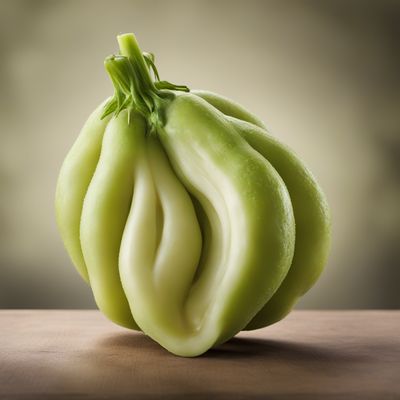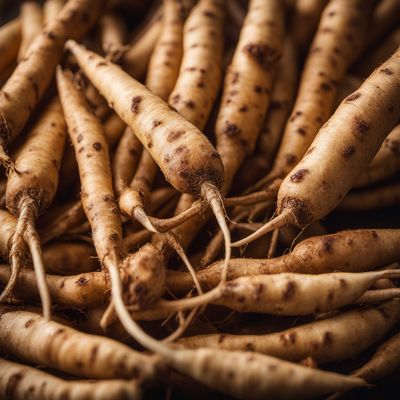
Ingredient
Canna
"The Versatile Wonder: Unveiling the Culinary Potential of Canna"
Canna, also known as Canna lily or Indian shot, is a flowering plant that belongs to the Cannaceae family. It is characterized by its vibrant and showy flowers, which come in a range of colors including red, orange, yellow, and pink. The plant's leaves are large and paddle-shaped, adding an exotic touch to any garden or plate. While the flowers and leaves are visually appealing, it is the rhizomes (underground stems) that are primarily used in cooking. These rhizomes have a starchy texture and a mild, nutty flavor that is reminiscent of water chestnuts. When cooked, canna rhizomes become tender and slightly sweet, making them a versatile ingredient in both savory and sweet dishes. The rhizomes can be boiled, steamed, roasted, or even pickled to enhance their taste and texture.
Origins and history
Canna is native to tropical and subtropical regions of the Americas, particularly Central and South America. It has a rich history and cultural significance in these regions, where it has been cultivated for centuries. The plant was highly valued by the ancient Aztecs and Mayans, who used it for both culinary and medicinal purposes. Canna was later introduced to Europe in the 16th century and quickly gained popularity as an ornamental plant. Today, it is cultivated worldwide for its aesthetic appeal and culinary potential.
Nutritional information
Canna is a good source of dietary fiber, providing approximately 2 grams per 100 grams. It is also low in calories, with around 50 calories per 100 grams. Additionally, canna contains small amounts of vitamins A and C, as well as minerals like potassium and manganese.
Allergens
There are no known allergens associated with canna.
How to select
When selecting canna rhizomes, look for ones that are firm and free from any soft spots or mold. The skin should be smooth and unblemished. Avoid rhizomes that are excessively dry or shriveled, as they may be past their prime.
Storage recommendations
To maintain the freshness of canna rhizomes, store them in a cool, dry place. They can be kept at room temperature for up to a week. If you need to store them for a longer period, place them in a perforated plastic bag in the refrigerator, where they can last for up to two weeks.
How to produce
Canna can be easily grown by planting rhizomes in well-draining soil in a sunny location. The plant thrives in warm climates and requires regular watering to keep the soil moist. With proper care, canna plants can reach heights of 4 to 6 feet and produce beautiful flowers.
Preparation tips
Before using canna rhizomes, they should be peeled to remove the tough outer skin. Once peeled, they can be sliced, diced, or grated depending on the desired recipe. To prevent discoloration, you can soak the cut rhizomes in water with a squeeze of lemon juice. Canna rhizomes can be boiled, steamed, roasted, or stir-fried to add a unique texture and flavor to dishes. They can be used in soups, stews, stir-fries, salads, or even as a substitute for water chestnuts in various recipes.
Culinary uses
Canna rhizomes are commonly used in Caribbean, Latin American, and Asian cuisines. They can be added to soups, stews, and curries to provide a starchy element and a subtle nutty flavor. Canna can also be pickled and used as a crunchy topping for salads or added to relishes and chutneys. In desserts, canna can be used to make fritters, cakes, or even infused into syrups for a unique twist.
Availability
Canna is commonly available in tropical and subtropical regions, including Central and South America, the Caribbean, and parts of Asia. It can also be found in specialty grocery stores or farmers markets in other regions.


